What’s in this week’s headlines? Three medical stories, one on world population and food, and another on China and capping carbon emissions.
- MS Breakthrough Holds Promise for Treating Autoimmune Diseases and Responses;
- Non-invasive Treatment May Be a Cure for Blindness;
- Macrophages the Key to Limb Regeneration for Salamanders at Least;
- Can we Feed 9 Billion by 2050? – New Models May Help us Get There;
- China Begins to Address CO2 Emissions with City-by-City Cap and Trade.
New Clinical Trial for Treating Multiple Sclerosis Produces Promising Results
How do you switch off a selective autoimmune response in the body without compromising the entire immune system? That’s what researchers at Northwestern University set out to do in developing a treatment for multiple sclerosis (MS). MS is an autoimmune disorder in which the body’s own immune system attacks the myelin that insulates the nerve cells of the spinal cord, brain and eyes. When the myelin is destroyed those who suffer from the disease experience numbness, potential paralysis, blindness and in extreme cases death.
What the researchers found is that they could deliver billions of myelin antigens by placing them in a patient’s white blood cells and then injecting those cells into the body. In this way the body would recognize the antigens and build a tolerance to them. Current MS therapies tend to suppress the entire immune system leaving those being treated open to opportunistic diseases.
The clinical trial involved nine patients with those receiving the highest dose of white blood cells showing the greatest reduction in autoimmune response to myelin.
If this approach works with MS it may become a protocol for other autoimmune diseases such as asthma and arthritis, and for dealing with allergies that cause anaphylaxis.
New Treatment for Blindness is Noninvasive
UC Berkeley researchers are inserting normal genes into eyes to help restore sight for diseases such as retinitis pigmentosa and macular degeneration. The team of researchers are using an adenovirus that has had 10 amino acids on its outer shell altered to allow it to pass through retinal cells to reach the eye’s light sensors. The diagram below illustrates how this type of gene therapy works.
Traditionally treatment for blinding diseases involved inserting a needle deep into eye which often lead to retinal detachment. But this new therapy is far more benign. All the doctor does is inject the adenovirus into the liquid vitreous humor behind the lens. The virus then does the rest finding its way through the many cell layers of the retina to replace the defective genes in the photoreceptors.
The therapy may also be used not just to insert genes but also to knock out genes that are causing deterioration in vision such as what occurs with age-related conditions like macular degeneration.
Immune Cells Key to Limb Regeneration in Salamanders
Macrophages are white blood cells that engulf and digest cellular debris and pathogens and stimulate other immune cells in the event of an injury or invasion by a foreign entity. They play a critical role in the immune system. But what role do macrophages play in limb regeneration?
Apparently a significant one according to a study just published in the U.S. Proceedings of the National Academy of Sciences. That is if we are talking about axolotl, an aquatic salamander that is the subject of the study. When macrophages were eliminated from an amputated limb site in axolotl the salamander was unable to regenerate a lost limb. When a small number of macrophages were present the limb regenerated but at a slower rate than normal. So obviously there is something that macrophages do that causes tissue to regenerate.
Salamanders can be a template for limb regeneration in humans if we can reverse engineer what happens when a limb is lost. Instead of scar tissue forming at the wound site researchers hope with the right macrophage responses they can activate limb regrowth.
Is Feeding Nine Billion Humans Even Possible on This Planet?
With over one billion seriously malnourished today in world of 7.3 billion, how will humans cope in 2050 when our population is expected to exceed 9 billion? In this month’s Nature Climate Change, an international team of scientists, members of the Agricultural Model Intercomparison and Improvement Project or AgMIP, shared a study on wheat production involving 27 different crop models and taking into consideration climate change, soil, precipitation patterns, and other factors.
Does the study give us an answer for 2050? Not yet. But it is hoped that by running the simulations and models and sharing the results with the Developed and Developing World countries that policies and procedures can be put in place to impact agricultural production of wheat positively.
China Implementing Carbon Cap-and-Trade in Select Cities Before National Rollout
It’s a well intentioned strategy but China’s first steps into controlling its CO2 emissions is built around intensity rather than total emissions. But before I go into the difference between the two you should know a little bit more about the program.
Beginning on June 18 as reported in Nature, the International Weekly Journal of Science, China will institute a carbon cap-and-trade policy for the city of Shenzhen and its more than 630 industrial sites. Shenzhen is just outside of Hong Kong and one of economic miracles in China’s growth over the last quarter century. Companies in Shenzhen are being given carbon quotas. If they exceed them they can buy credits from companies that are below their quotas. By 2015 China intends to add the cities of Beijing, Tianjin, Shanghai and Chongqing as well as Guangdong and Hubei provinces to the cap-and-trade quota system. That will be followed in 2016 by a national quota system.
So China is committed to cutting its carbon but it is measuring it by intensity rather than total emissions. Intensity is the same measure that the Canadian government uses to show its commitment to reducing carbon emissions. But intensity doesn’t if an economy continues to grow because all it does is reduce the emissions per unit of production. So if production triples and intensity goes down by 40% total emissions continue to grow.
With some of the most polluted cities in the world as seen in the compiled pictures below, China, at least, is making a start. How well will it work? What watchdog will ensure that companies are playing by the rules? Will corruption and government cronyism foul up the results? We will see.
A Postscript
Some of you were kind enough to suggest new stories in the last week. The China story was one of them. I look forward to hearing from more of you and as always welcome your questions and comments. Thanks for dropping by.
– Len Rosen

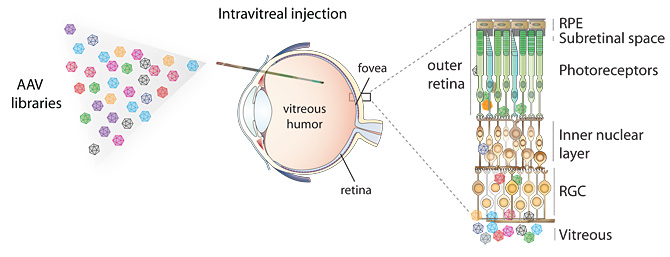
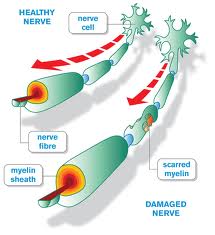

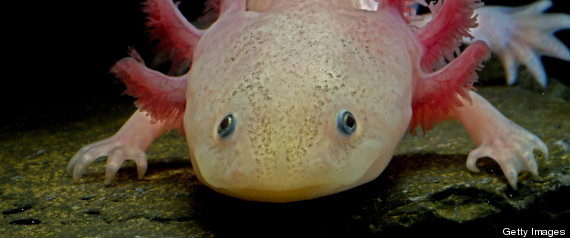
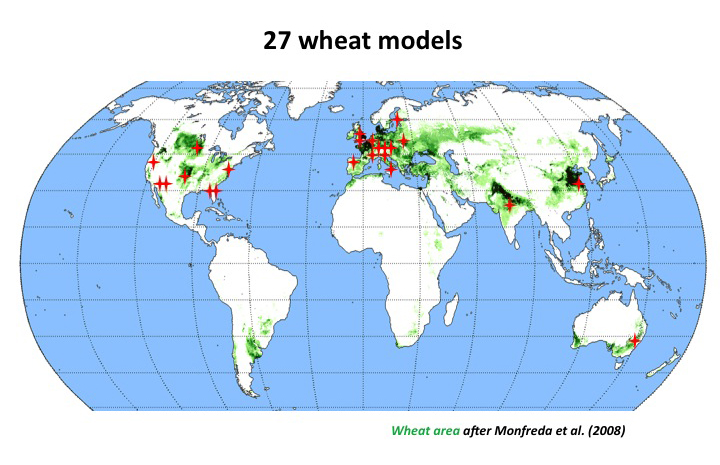
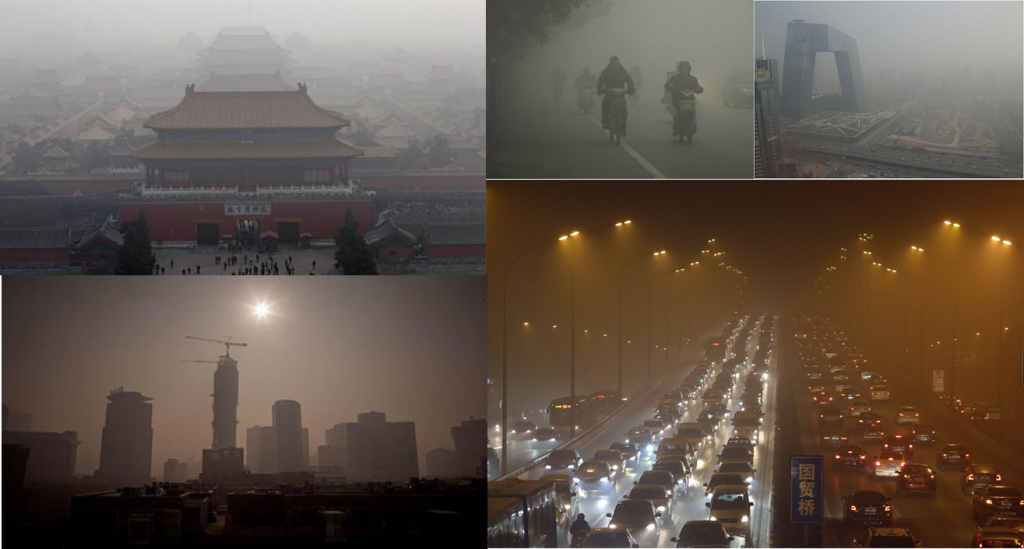















While it’s obvious air pollution in major cities is a problem for the urban residents, it’s not at all obvious that the coal fired power plants that produce the electrical power for the cities are located within the cities, or that the power plants are a principal source of the air pollution in urban areas. Rural power plants are the major source of China’s contribution to global atmospheric carbon. Will the new cap and trade program force the urban industrial plants to pay pro rata cap and trade on their power consumption derived from rural coal fired power plants? I’m betting not. The cynical urban cap and trade program will do virtually nothing to arrest ever-increasing CO2 production at the rural power plants, hence the rate of China’s CO2 loading of the atmosphere will continue to rise.
You may be right that the cap-and-trade policies being implemented in China are merely a ruse. But the 2016 announced objective is for a nationwide cap-and-trade program. And the businesses in urban centres that are being given quotas have to buy their power from somewhere. I assume it is ex-urban coal-fired power plants like those that ring cities like Beijing. That means the carbon has to be counted in some way under traditional cap-and-trade quotas.
My objection is to the way CO2 will be measured based on intensity rather than total volume. To me intensity is a fool’s errand way of dealing with greenhouse gas emissions.
((To me intensity is a fool’s errand way of dealing with greenhouse gas emissions.))
Seems highly improbable that China’s senior leadership would be unaware of this perspective. The best public evidence suggests China intends to supply the largest proportion of its constantly growing electrical demand at the lowest possible costs by burning coal. I’m betting China’s government will merely convert the cynical urban cap and trade program into a new form of national taxation on industrial production, and it will be a form of taxation that will prove almost impossible to evade. Companies can cook their books and structure their operations to conceal and defer profits, as we should suppose all Chinese companies do, but the power meter reports power consumption regardless of company profit or loss. The cap and trade program will however provide some additional incentive for industrial producers to use power more efficiently. Still the Chinese economy will continue to expand and produce CO2 at a much faster rate than any urban carbon cap and trade program could possibly constrain it.